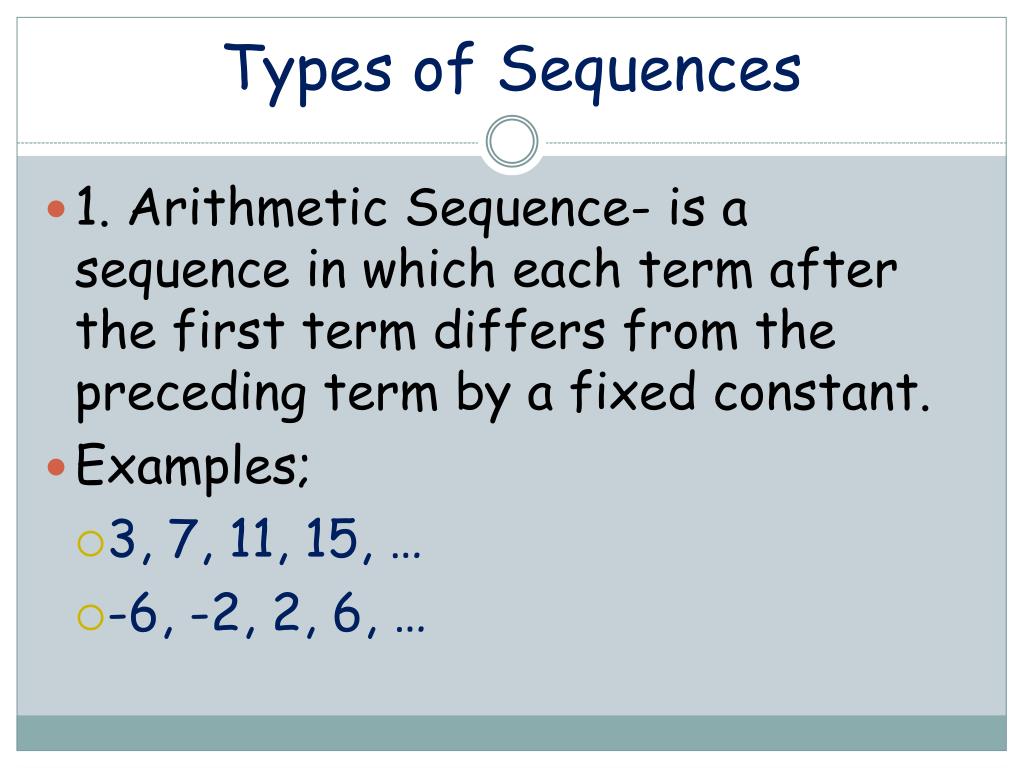

We also offer mathematics ncert class 10 pdf for students to practice upon. In this article, we have learned all the basics of the arithmetic sequence, along with examples. Now, after reading the above post, you can easily find the nth term and the sum of squares by using formulas. Sum of the sequence = s = n/2 * (2a 1 + (n – 1) * d) Step-III: Take the formula of the Sum of the sequence to calculate it. Step-IV: Now put the common difference, first term, and the nth term of the sequence in the formula.ġ7 th term of the sequence= b 17 = b 1 + (17 – 1) * d N th term of the sequence= b n = b 1 + (n – 1) * d Step-III: Take the formula of the nth term to calculate it. Step-II: Identify the first term, n th term, and the difference between two consecutive terms.

Example-I: For the n th termĬalculate the 17 th term of the sequence, if the arithmetic sequence is 2, 7, 12, 17, 22, 27, 32, 37, 42, 47, 52, 57, …

Let us take a few examples to solve the problems of arithmetic sequence manually. The arithmetic sequence can be determined easily by using its formulas.
Type of sequence and examples how to#
The formula for finding the difference between two consecutive terms is:Ĭommon difference = d = b n – b n-1 How to find the arithmetic sequence? Sum of the sequence = s = n/2 * (2b 1 + (n – 1) * d) The formula for determining the sum of the sequence is: The formula for finding the n th term of the sequence is: The formulas for the arithmetic sequence are of three kinds such as for the n th term, the sum of series, & the common difference. While a negative difference among two consecutive terms or a positive difference between two terms for the negative integer is said to be the decreasing sequence.įor example, 11, 8, 5, 2, -1, -4, -9, -10, -13, -16, -19, … is a decreasing sequence as the starting term is 11 and the difference between two successive terms is negative three. The positive difference among the sequences is said to be the increasing sequence or the positive difference for the positive integers is said to be the increasing sequence.įor example, 33, 35, 37, 39, 41, 43, 45, 47, 49, 51, 53,… is an increasing arithmetic sequence as the starting term is 35 and the common difference among two successive terms is two. are examples of the arithmetic sequence as the difference between each successive term of these numbers is the same. Integers, whole numbers, natural numbers, odd numbers, even numbers, etc. The sequence of arithmetic can be started from any number either positive or negative but the common difference between the terms must always be the same. What is the arithmetic sequence?Ī list of numbers in which the difference among two successive terms is the same or constant is said to be the arithmetic sequence. In this article, we will learn all the basics of the arithmetic sequence along with solved examples. There are several ways to determine the sequence of the list of numbers.

The list of numbers that have the same common difference is said to be a sequence with accurate order. Sequence means the ordered list of values in a particular pattern, like taking the common difference. In mathematics, the arithmetic sequence is widely used to find the correct sequence of the given data values. Arithmetic sequence: An introduction with examplesĪrithmetic sequence: An introduction with examples.


 0 kommentar(er)
0 kommentar(er)
